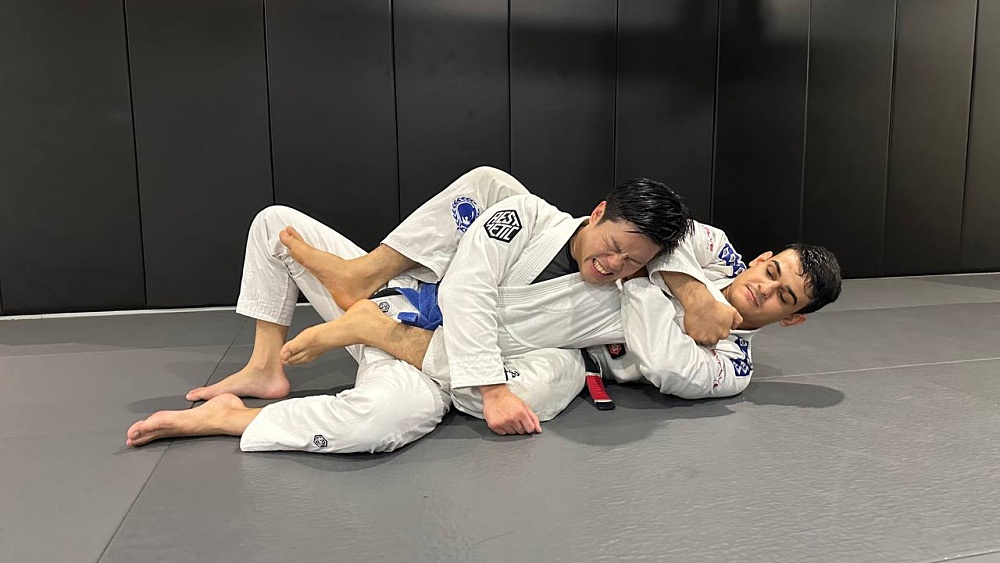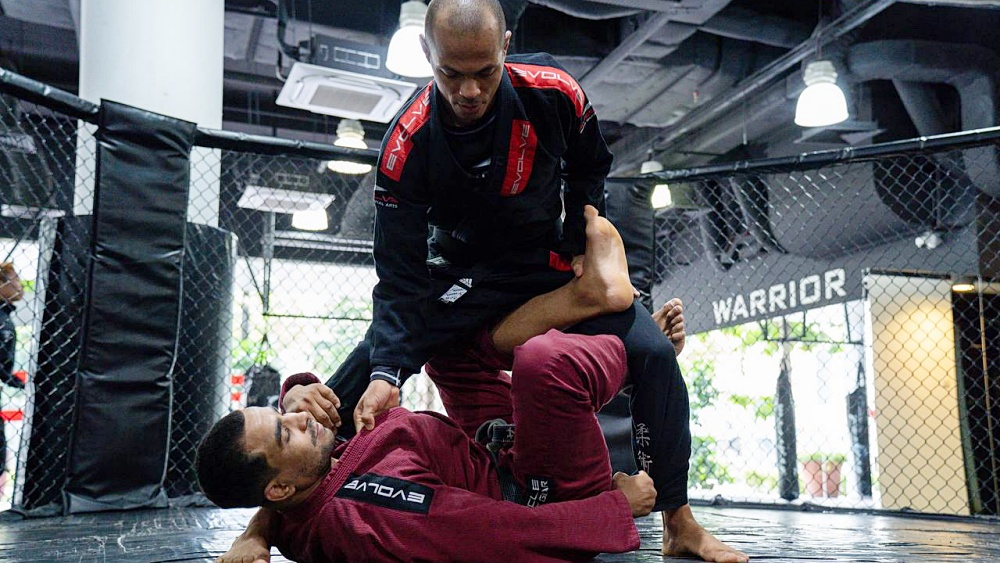In Brazilian Jiu-Jitsu, grappling with experienced opponents is challenging. Most of the time, trained grapplers are familiar with defending various submissions executed from different positions. This is why it’s important to chain your attacks, as it will put you one step ahead of the opponent. In this article, we will explore a unique submission that will leave your opponents stunned, the thunder lock.
What Is The Thunder Lock In BJJ?
A move of many names and an unconventional technique, the thunder lock is a shoulder lock that forces the opponent’s arm, particularly by grabbing the elbow, to behind their head. The pulling of the arm puts pressure on the opponent’s shoulder as it is forced to go beyond its normal range of motion. It is an uncommon technique that you may catch your opponents with, especially when they are defending from chokes, and you are attacking from the back mount.
Think of applying a half-nelson to the opponent, but instead of cupping their neck/head with your hand as you pressure it down, you’re cupping and pulling their elbow and wrist and forcing it to reach behind their head. This technique puts a lot of pressure on the shoulder joint.
How To Apply The Thunder Lock
The thunder lock is applied from the back mount. Generally, there are two ways to control the opponent from behind: hooks or a body triangle. Both have pros and cons, but for this submission, the body triangle will come in handy. This is because if you have the body triangle locked on top of the opponent’s top hip, you’ll have the ability to use both your arms as an attacking arm to threaten submissions, and it makes it difficult for the opponent to escape with their hips by going up or down.
Opponents may sometimes defend by raising their elbows and grabbing behind their necks to protect themselves from chokes. You can use the opponent’s elbow position to stretch their body and apply the thunder lock. To do this, grab at the tip of the opponent’s bottom arm’s elbow using your bottom hand and start pulling it behind to connect with your chest. From here, grab their elbow using both hands and start pulling behind to stretch their shoulder while stretching them with the body triangle. When attacking with the thunder lock, the first thing to remember is the principle of leverage, which is to always go for the middle and, thus, aim for the opponent’s elbow when pulling it up.
Now, to explore the thunder lock deeper, typically, when you have the opponent’s back and start working for chokes with the seatbelt grip, a very common defense is for the opponent to start answering the phone (using their hand to grab behind their neck to block choke attempts). This defense makes the opponent more vulnerable to the thunder lock counter as their elbow is already midway pointing up. Defending in that manner elevates their elbow, giving you the ability to pull their arm behind their head by scooping their elbow up. Pulling the arm far back, deep behind the opponent’s head, and locking both your hands between their head and arm while keeping a body lock with your legs puts pressure on the opponent’s shoulder and clavicle. As you pull, ensure you are pulling the opponent’s arm to your chest.
There are a few ways to set up the thunder lock from the back control. Assuming you’re behind the opponent and they defend by answering the phone using their left hand, you can scoop in your left arm and pull to get the opponent’s left arm behind their head. From there, lock your hands and pull straight back to get the tap.
Another way is if you’re grabbing the opponent’s left hand’s wrist (bottom hand) using your choking arm (top hand) and feel the opponent is pinching their elbow, you can take their left hand and pull it behind their head from the front of their body. Doing this will allow you to get their left hand deeper on their back than you would initially do with the first setup. Finish by using your left arm to grab the left elbow and lock your hands together, hip in, and pull the shoulder back.
The last method if you want to secure the thunder lock submission regardless of how you get the opponent’s hand behind their head is to use your top hand (right hand) to cup the opponent’s opposite elbow (left elbow) and use your bottom hand (left hand) to cup their head like in a half-nelson while using your chin to block the opponent’s left wrist down so they can’t pull it out. Finish by pulling the opponent’s left elbow with your right hand and your left hand cupping their head and pushing it down.
Now, a key tip is, if you’re the one trapped in the opponent’s back mount and are defending from chokes by answering the phone, keep your elbow down and tight to your body. In this way, the opponent will not be able to sink in their choke, and it will remove your susceptibility from being caught in the thunderlock.
Two-On-One: Rear Triangle With Thunder Lock
If attacking from the rear mount is part of your A game, you may consider attacking with the thunder lock once you’ve locked in your rear triangle. Keep in mind that while most opponents use the “answer the phone” defense against chokes, this makes them vulnerable to the thunder lock.
Rather than using the body lock to control the opponent from the back mount, you may sometimes set up and find openings for a rear triangle when attacking from behind. While the rear triangle may be one of the most powerful chokes in BJJ as it allows you to choke the opponent from behind using the strongest part of your body – the legs, opponents may sometimes tolerate the pressure, especially when they have a broad upper body. If the opponent defends by answering the phone, which makes it hard for you to pull off an armbar in combination with the rear triangle, you may as well chain it with the thunder lock.
Conclusion
The thunder lock certainly has its advantages, and among them is that it is an unconventional submission. Generally, there will be those unfamiliar with this technique, leaving them vulnerable to your attempt at the submission. Practice the thunder lock and see how it fits in your game to chain in with your submission game from the back.
You may also like:
















